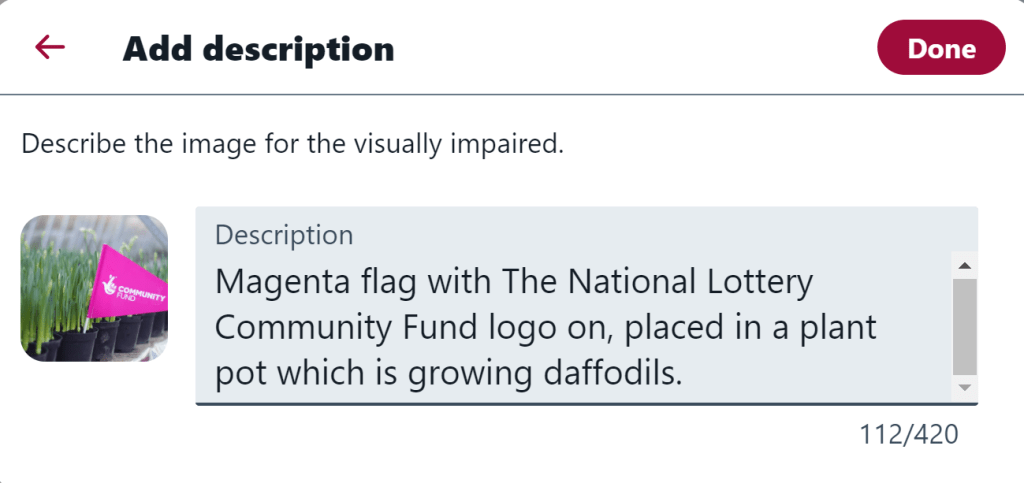
Now more than ever, people are taking to social media to connect and offer services. For many of us, social media posts can be tricky to navigate and understand. Here we’ve compiled a guide to help you make your social media more accessible for a wide audience.
- Consider the ‘readability’ of your posts, make your content easy to understand for its intended users.
Avoid unnecessarily complex language, keep what you’re saying simple and easy to read. Here’s our favourite readability checker.
- When writing a post, use short sentences broken up with punctuation and paragraph breaks.
Long sentences with little punctuation will make your post difficult to read and it won’t allow screen readers to pause, which can make your post hard to understand.
- Capitalise the first letter of every word in a hashtag #LikeThis so that people can read each word individually. Don’t use more hashtags than necessary.
If you don’t capitalise the first letter of each word in a hashtag – it will make it difficult for people and screen readers to read it. Using too many hashtags can make your post heavy and complicated.

- Don’t embellish your post with too many emojis or punctuation marks.
Many screen reader technologies do not acknowledge when an emoji is used but will read out exactly what it sees. A top tip is to use emojis at the end of a sentence and avoid using them as substitutes for words. The same goes with punctuation – use your decorative elements responsibly to avoid complicating your post! 😉
- Keep text on images/videos high contrast, e.g. white font on black background or vice versa.
Having your text high contrast makes it much easier for people to see and read.

- Always add image descriptions when posting a photo.
Without an image description, screen reader users will not know what the image is of. You can add an image description through the alt text/image description features on Twitter, Instagram, Facebook and LinkedIn. If these features aren’t available you can include [Image: description of image] in the text of the post.
Many people post images (like posters/flyers with more information) to cram more text into their post. Not all people can read the text from an image, and if your image must include text – make sure all that information is included in your image description. A few months back, Twitter introduced alt-text for GIFs as well as images – so get writing those descriptions!
Here’s a useful article on how to write image descriptions and use the alt-text functions.
- Always use video captions/subtitles when posting a video – and make sure the text is large and high contrast enough to read.
This is important for those who are deaf or hard of hearing, but captions/subtitles also benefits engagement as a whole – as many people simply do not listen to videos on social media. Remember to include all sounds and not just dialogue.
Here’s a guide on three ways to easily add captions to your video.

- Make sure all your important information in videos is conveyed audibly as well as visually.
If there is key text on screen, it should also be read out or included in the body of the text in your post (so that a screen reader can read it out).
- Provide transcripts for audio-only content such as podcasts.
Here’s a helpful article on how to write transcripts.
- Consider trigger warnings.
Let readers know that sensitive content is being discussed by writing ‘Trigger warning’ or ‘TW:’ at the beginning of your post. This simple warning can help avoid potentially upsetting someone dealing with trauma or a mental health issue.
To find out more trigger warnings and some suggested times to use one – here’s a resource Oxford University Student Union created.
We hope you’ve found this useful. These suggested adjustments help many more people access your social media posts. Consistency is key, so keep up these steps when crafting your content and they’ll eventually become positive habits.
Looking to read more? Check out Inclusion Scotland’s Accessible Social Media guide.
[…] accessibility tip: A 10-step guide to make your social media content more accessible – National Lottery Community Fund – […]